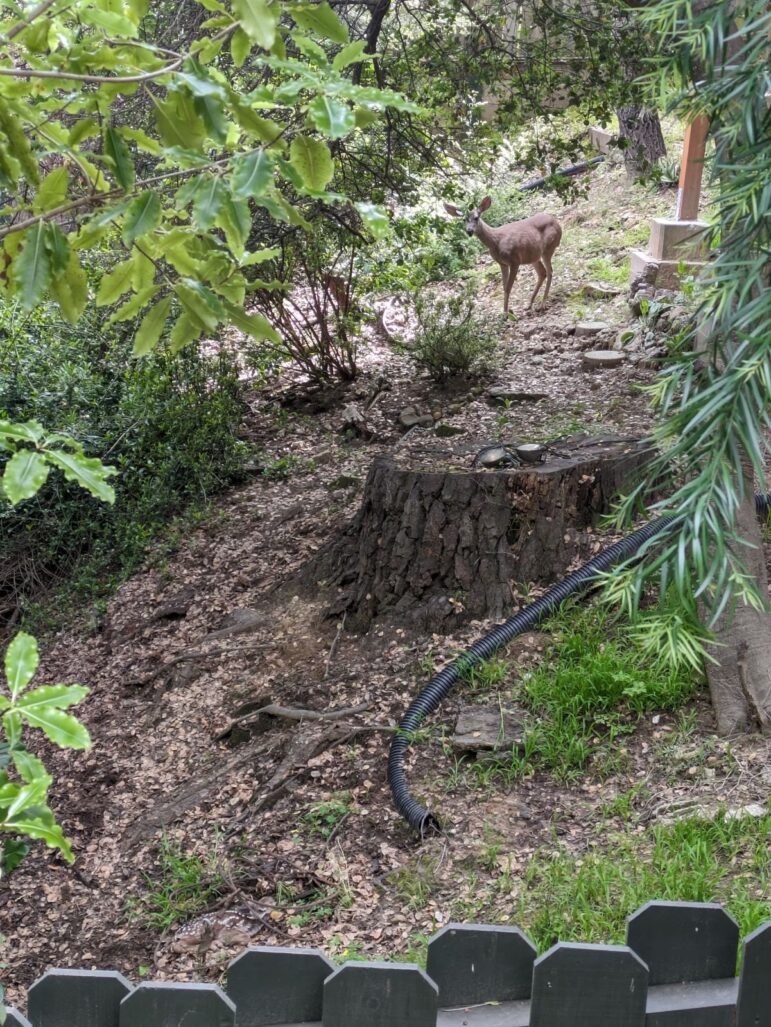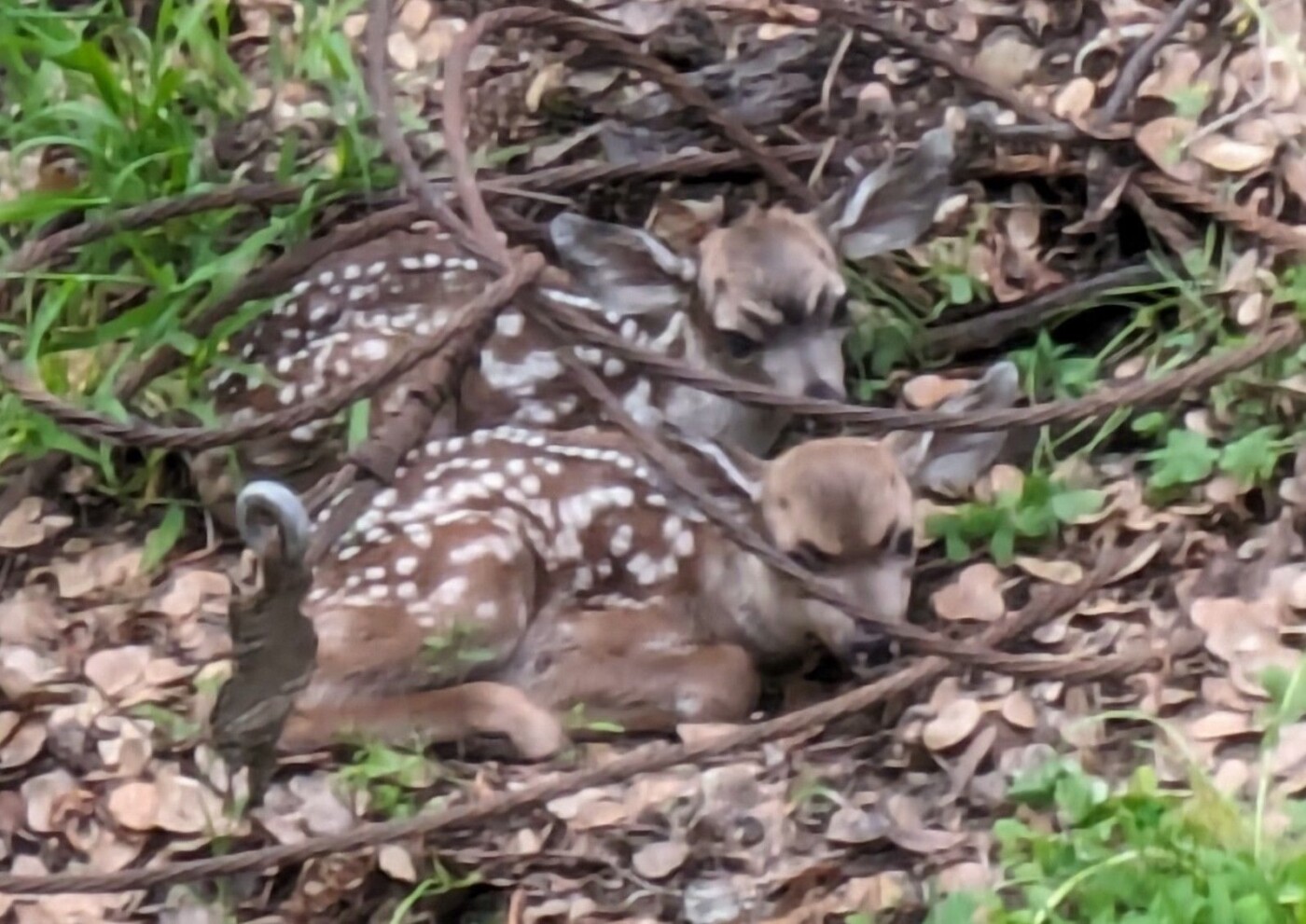Tis the season for spring babies: A resident shared a photo of twin baby fawns lying in rest in a secluded spot between houses in Upper Piedmont.
How good are your eyes? See if you can spot them in this second photo:

What should you do if you find babies unattended by their mother? According to the Lindsay Wildlife Experience, a family museum and wildlife rehabilitation center in Walnut Creek and the first wildlife hospital established in the United States, it’s best to leave them alone and keep dogs as far away as possible.
Black-tailed deer form small family groups, which are most active early in the morning and again at dusk. Fawns are born in late spring or early summer, having spotted coats for about three and a half months. Each doe has one or two babies. Fawns begin foraging for food on their own when one week old, but nurse heavily for at least two months. Rarely traveling very far, deer live most of their lives close to where they’re born.
“Abandoned” fawn: Does hide their babies for the first week of life so they can go off to feed, often for the entire day. These babies are not abandoned; the mother is most likely out of sight watching you. If you find a fawn lying quietly in the grass, leave it where it is—stay back and stay out of sight, and keep dogs as far away as possible. The mother will not return if she senses people and dogs are too close. If a fawn has been picked up, return it to the exact location it was found, or within sight of that spot. Stay back several hundred feet, and watch for the mother’s return, which can take many hours.
If the fawn appears injured, bring it to the wildlife hospital or contact your local animal control services (As of Oct. 5, 2020, Contra Costa County is no longer responding to any sick, injured or trapped wildlife but will refer callers to the California Department of Fish and Wildlife.) Fawns are terrified of people and respond by being as quiet and small as they can get. A fawn carried in a person’s lap or hearing human voices will be very frightened. If you need to move a fawn, keep as quiet as possible; touch it as little as possible. Fawns have a very special diet and can become ill if given the wrong diet, so there is no need to offer them food or water before arriving at the hospital.
Injured adult: Adult deer cannot be treated. The stress and fear associated with captivity is more than they can endure. Fortunately, many injuries can heal on their own. The best advice is to leave them alone, keeping dogs and people as far away as possible. If the deer is down or broken bone is exposed, call animal control.
Chased by dogs: When chased by dogs for long periods, deer can collapse from overheating. Remove all dogs from the area, stay several hundred feet back, and watch if the deer revives, which may take several hours. If the deer does not recover, call the wildlife hospital or animal control for advice.
Deer from another area: Lindsay Wildlife Hospital cannot accept fawns from outside of the area. Fawns can only be accepted from Contra Costa County and Alameda County, north of I-580.
Note: Deer are not affected by poison oak; in fact, it is a favorite food. Avoid skin contact with deer, since they may have poison oak oils on their bodies. They may also have ticks—check carefully for ticks whenever encountering deer. In addition to the antlers of the males, deer have sharp hooves and kick very hard. Even fawns can cause injury when they kick.
